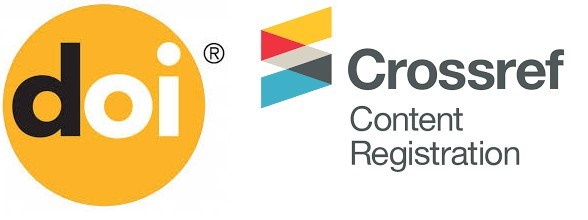Analisis Faktor-Faktor Kesulitan Menulis Huruf Abjad Bahasa Arab
DOI:
https://doi.org/10.32699/liar.v3i2.1054Keywords:
problematic, Nahwu Learning, Arab PegonAbstract
The problem behind this research is that students’ difficulty in writing the letters of the Arabic alphabet and connecting letters to a word. The purpose of this research is to find out the factors that cause students difficulties in writing Arabic alphabet letters. This research method uses descriptive qualitative research design with a case study approach.The results of the research has shows that students were still very difficult in writing Arabic alphabet. The student’s category of difficulty is the difficulty in writing the letters of the Arabic alphabet either standing or straying, and the placement of the letters is still wrong. Then the letter writing which is considered difficult is the letters د, ذ, س, ش, ص, ض, ط, ظ, ف, ق, م, و, هـ ي . As for the causes of students’ difficulty in writing the letter of the Arabic alphabet, it comes from both internal and external factors. Internal factors include students do not memorize the letters of the Arabic alphabet, lack of talent, interest and motivation. External factors include means and less supportive learning infrastructure, and the learning methods and media used by the teacher are less varied.
References
Ghufron, M. Nur, & Risnawati S. (2014). Teori-Teori Psikologi. Yogyakarta. Ar-Ruzz Media.
Hakim, Thursan. (2002). Mengatasi Rasa Tidak Percaya Diri. Jakarta: Puspa Swara.
Izzan, A. (2008). Metodologi Pembelajaran Bahasa Arab. Bandung: Humaniora.
Kuraedah, S. (2015). Aplikasi Maharah Kitabah dalam Pembelajaran Bahasa Arab. Jurnal Al-Ta’dib. 8 (2).
Mujib, F. dan Nailur, R. (2011). Metode Permainan-permainan Edukatif dalam Belajar Bahasa Arab. Yogyakarta: DIVA Press.
Mulyadi. (2010). Diagnosis Kesulitan Belajar & Bimbingan Terhadap Kesulitan Belajar Khusus. Yogyakarta: Nuha Litera.
Nasution. S. (2011). Berbagai Pendekatan dalam Proses Belajar Mengajar. Jakarta: PT Bumi Aksara.
Nuha, U. (2012). Metodologi Super Efektif Pembelajaran Bahasa Arab. Yogyakarta: DIVA Press.
Nurdin, M. (2008). Kiat Menjadi Guru Professional. Jogjakarta: Ar-Ruzz Media.
Toto, R. (2011). Kurikulum dan Pembelajaran. Bandung: UPI Press
Slameto. (2010). Belajar dan Faktor yang mempengaruhinya. Jakarta: Rineka Cipta.
Sudijono, A. (2012). Pengantar Evaluasi Pendidikan. Jakarta: PT. Raja Grafindo Persada.
Sugiyono. (2017). Metode Penelitian Kuantitatif, Kualitatif, dan R&D. Bandung: Alfabeta.
Suharyo, D. (2012). Mujizat Huruf-huruf Al-Qur’an Memahami Makna Al-Qur’an Melalui Kode dan Tinjauan Sain. Jakarta: CV Sapta Harapan,.
Sukardi. (2008). Metodologi Penelitian Pendidikan, Kompetensi dan Praktiknya. Jakarta : PT. Bumi Aksara.
Tatang. (2011). Jurnal Bahasa dan Sastra FPBS UPI: Kemampuan Keterampilan Menulis Permulaan Huruf Arab pada Siswa Pendidikan Anak Usia Dini. 11 (2), 1-18.
Tirtonegoro, S. (1984). Anak Super Normal dan Program Pendidikannya. Jakarta: Bina Aksara.
Wa Muna. (2016). Al-Izzah: Jurnal Hasil Penelitian. Ragam Tulis Teks Bahasa Arab (Studi Kasus Pada Mahasiswa Fakultas Tarbiyah Dan Ilmu Keguruan (FTIK) IAIN Kendari. 11(2), 1-17.
Wassid, I dan Dadang, S. (2011). Strategi Pembelajaran Bahasa. Bandung: PT Remaja Rosdakarya.
Downloads
Published
Issue
Section
License
Authors who publish with this journal agree to the following terms:
a. Authors retain copyright and grant the journal right of first publication with the work simultaneously licensed under a Creative Commons Attribution-ShareAlike 4.0 International License. that allows others to share the work with an acknowledgement of the work's authorship and initial publication in this journal.
b. Authors are able to enter into separate, additional contractual arrangements for the non-exclusive distribution of the journal's published version of the work (e.g., post it to an institutional repository or publish it in a book), with an acknowledgement of its initial publication in this journal.
c. Authors are permitted and encouraged to post their work online (e.g., in institutional repositories or on their website) prior to and during the submission process, as it can lead to productive exchanges, as well as earlier and greater citation of published work (See The Effect of Open Access).












